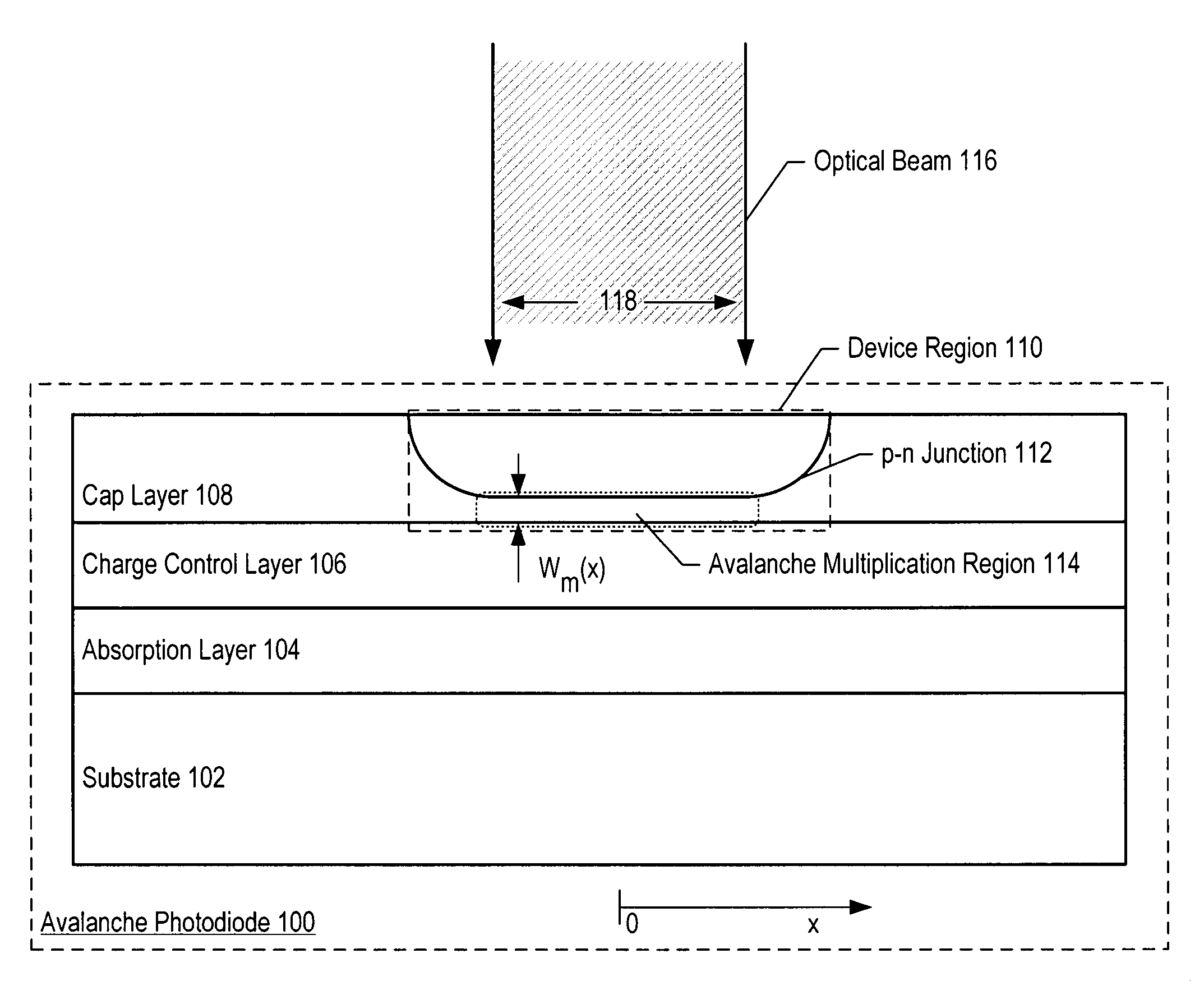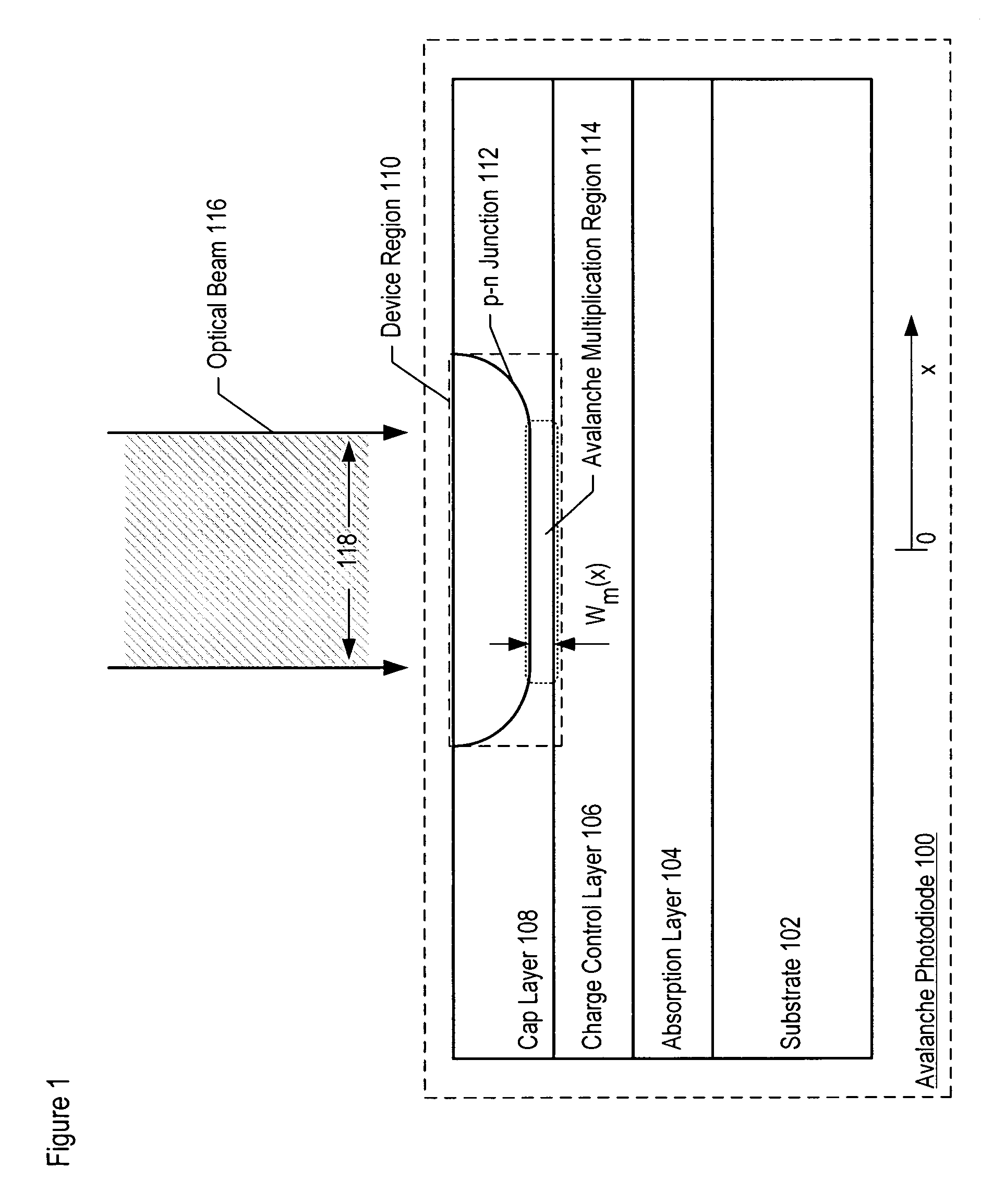Method for forming an avalanche photodiode
a photodiode and avalanche technology, applied in the field of avalanche photodiodes, can solve the problems of reducing the breakdown voltage, increasing the dark count rate, and reducing the total so as to and reduce the volume of the device region.
- Summary
- Abstract
- Description
- Claims
- Application Information
AI Technical Summary
Benefits of technology
Problems solved by technology
Method used
Image
Examples
Embodiment Construction
[0035]The following terms are defined for use in this Specification, including the appended claims:[0036]Device region is the portion of the cap layer defined by the lateral extent of the doped portion of the cap layer. The device region includes the full thickness of the cap layer, and therefore includes the undoped portion of the cap layer that resides under the doped portion. For example, the device region includes both the active region and the edge region, as defined below.[0037]Active region means that portion of the cap layer wherein the p-n junction has a substantially uniform doping profile and junction depth (i.e., wherein the p-n junction is a planar junction). The active region extends though the entire thickness of the cap layer, and therefore also includes the avalanche multiplication region under the planar junction.[0038]Edge region means that portion of the cap layer wherein the p-n junction does not have a substantially uniform doping profile and junction depth (i....
PUM
 Login to View More
Login to View More Abstract
Description
Claims
Application Information
 Login to View More
Login to View More - R&D
- Intellectual Property
- Life Sciences
- Materials
- Tech Scout
- Unparalleled Data Quality
- Higher Quality Content
- 60% Fewer Hallucinations
Browse by: Latest US Patents, China's latest patents, Technical Efficacy Thesaurus, Application Domain, Technology Topic, Popular Technical Reports.
© 2025 PatSnap. All rights reserved.Legal|Privacy policy|Modern Slavery Act Transparency Statement|Sitemap|About US| Contact US: help@patsnap.com



